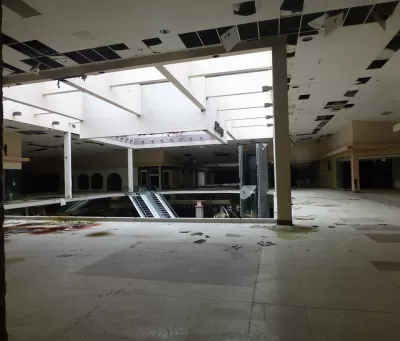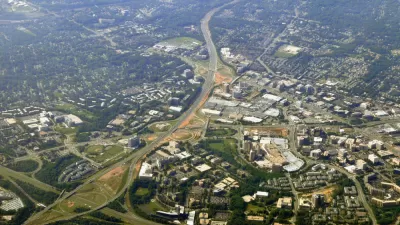More online shopping means fewer consumers are spending money at brick-and-mortar stores, with suburban malls hit especially hard. But municipalities are looking for creative strategies to navigate a post-mall world.

Gregory Scruggs writes about changing consumer trends and the impact on municipalities. "Over the past two decades, consumers nationwide have made significant shifts in their shopping habits, migrating to online retail and returning to traditional commercial corridors and shopping districts in economically strong metro areas."
The result has been more struggling suburban malls with high vacancy rates or properties that have shut down altogether. This in turn means lower property assessments and decreases in property tax funding for local communities. For municipalities that depend largely on commercial property taxes, the effects of flagging malls can be substantial.
But, says Scruggs, communities are planning ahead in anticipation of a long-term shift away from traditional malls. Municipalities are investing in housing and retail in downtowns to make up for the tax revenue that used to come from suburban malls. Others are looking to the redevelopment of mall properties as a way to diversify and transform these spaces.
Scruggs reviews examples of various municipalities around the country that are working to adjust and adapt to changing retail landscapes. "Such a radical change from the mall as an exclusively retail environment may conflict with land use policy. Instead of serving as an obstacle to this transition, local government can seize the reins to help secure an economically vibrant future."
FULL STORY: The Unmalling of America

Alabama: Trump Terminates Settlements for Black Communities Harmed By Raw Sewage
Trump deemed the landmark civil rights agreement “illegal DEI and environmental justice policy.”

Planetizen Federal Action Tracker
A weekly monitor of how Trump’s orders and actions are impacting planners and planning in America.

Why Should We Subsidize Public Transportation?
Many public transit agencies face financial stress due to rising costs, declining fare revenue, and declining subsidies. Transit advocates must provide a strong business case for increasing public transit funding.

Understanding Road Diets
An explainer from Momentum highlights the advantages of reducing vehicle lanes in favor of more bike, transit, and pedestrian infrastructure.

New California Law Regulates Warehouse Pollution
A new law tightens building and emissions regulations for large distribution warehouses to mitigate air pollution and traffic in surrounding communities.

Phoenix Announces Opening Date for Light Rail Extension
The South Central extension will connect South Phoenix to downtown and other major hubs starting on June 7.
Urban Design for Planners 1: Software Tools
This six-course series explores essential urban design concepts using open source software and equips planners with the tools they need to participate fully in the urban design process.
Planning for Universal Design
Learn the tools for implementing Universal Design in planning regulations.
Caltrans
Smith Gee Studio
Institute for Housing and Urban Development Studies (IHS)
City of Grandview
Harvard GSD Executive Education
Toledo-Lucas County Plan Commissions
Salt Lake City
NYU Wagner Graduate School of Public Service





























